Friends of AJAS
Thank You to Our 2026 Sponsors!


2025 Breakfast with Scientists Participants
- Dr. Amy Keating - MIT - Biology, Protein Design - Professor and Department Head
- Dr. Arup Chakraborty - MIT, IMES - Chemical Engineering - Insititue Professor
- Dr. Cathy Drennan - MIT - Chemistry, Metallo Enzymes - Professor and HHMI Investigator
- Dr. Cigall Kadoch - Dana Farber Cancer Institute - Chromatin remodeling - Associate Professor of Pediatric Oncology
- Dr. Gary Ruvkun - Harvard/MGH - Genetics/Molecular Biology - Professor - Nobel Laureate
- Dr. Hearher Keyes - Whitehead Institute - CRISPR screen - Director of CRISPR core facility
- Dr. Jessica Hurt - Biogen - Genomics Medicine - Head of Genomic Medicine
- Dr. Kistala Prather - MIT - Chem E, Reverse Metabolics - Professor and Department Head
- Dr. Matthew Frosch - MGH and HST - Neuropathology - Director of Neuroanatomy
- Dr. Nina Leksa - Sanofi - Drug discovery - Distinguished scientist - Group Head
- Dr. Pawan Sinha - MIT - BCS - Computer Vision - Professor
- Dr. Phil Sharp - MIT/Kock Institute - Biology, RNA Biology - Institute Professor - Nobel Laureate
- Dr. Ravikiran Raju - MIT - Picower Institute - Neuroscience - Research Scientist
- Dr. Ritu Ramen - MIT - Mech E - Assistant Professor
- Dr. Robert Weinberg - MIT/Whitehead Institute - Biology, Cancer Biology - Professor
- Dr. Sabine Mulepati - Intellia Therapeutics - Gene Editing - Director
- Dr. Scott Carver - UGA - Professor
- Dr. Sergey Vchinnikov - MIT, School of Computing - Alpha Fold - Assistant Professor
- Dr. Vladimir Bulovic - MIT - Electrical Engineering - MIT nano director
- Dr. Kristine Knouse - MIT/KI - Biology, Regeneration/Aging - Assistant Professor MD/PhD
- Dr. Nancy Kanwisher - MIT - BCS, Brain Mapping - Professor
- Dr. Wilfredo Garcia - Ragon Institute/MGH - Immunology - Carr T - Fellow MD/PhD
- Dr. Jamie Vernon - Sigma Xi
Dr. Peter Courtland Agre, M.D.
University Professor and Director
Johns Hopkins Malaria Research Institute Bloomberg School of Public Health
2003 Nobel Prize in Chemistry

A native Minnesotan, Peter Agre studied chemistry at Augsburg College (B.A. 1970) and medicine at Johns Hopkins (M.D. 1974).
Following Internal Medicine Residency at Case Western Reserve University Hospitals of Cleveland and Hematology-Oncology Fellowship at the University of North Carolina at Chapel Hill, Agre joined the faculty at the Johns Hopkins School of Medicine where his laboratory became widely recognized for discovering the aquaporins, a family of water channel proteins found throughout nature and responsible for numerous physiological processes as well as multiple clinical disorders.
Following a term as Vice Chancellor at Duke Medical Center, Agre joined the Johns Hopkins Bloomberg School of Public Health in 2008, where he is University Professor and Director of the Malaria Research Institute and Program Director of the NIH International Center of Excellence in Malaria Research for Zambia and Zimbabwe.
Agre shared the 2003 Nobel Prize in Chemistry with Roderick MacKinnon for discoveries concerning channels in cell membranes. Agre has received additional honors including the Distinguished Eagle Scout Award from the Boy Scouts of America.
Agre is a member of the National Academy of Sciences and the Institute of Medicine; he is past-Chair and member of the Committee on Human Rights of the National Academies. From 2009-11, Agre served as President and Chair of the Board of Directors of the American Association for the Advancement of Sciences and led scientific diplomacy visits to Cuba, Democratic Republic of Korea (North Korea), and Myanmar (Burma).
Agre and his wife Mary, a teacher, have been married 36 years and have four grown children.
Website:
http://www.nobelprize.org/nobel_prizes/chemistry/laureates/2003/agre-autobio.html
Return to TopDr. Bruce Alberts
Editor-in-Chief of Science
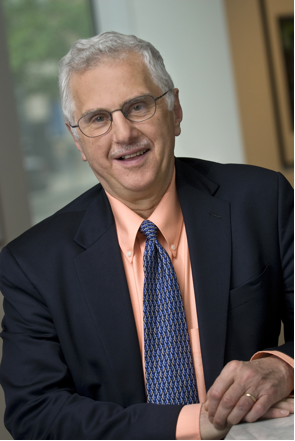
"Partnering with the annual meeting of the AAAS, the American Junior Academy of Science convention offers young scientists an opportunity to present scientific papers at a poster session and to participate in activities that are tailored to the interest of high school age scientists. This convention also serves the important function of introducing the students to the wider science community, which is very well represented by the other, older attendees at the AAAS meeting."
"It has been my pleasure to attend the AJAS Breakfast with Scientists for the last few years, and to meet the bright, enthusiastic young scientists who are taking an important new step at the start of their scientific careers. I have also had the privilege of brainstorming with the AJAS leadership about sharing resources and ideas."
Bruce Alberts, a prominent biochemist with a strong commitment to the improvement of science and mathematics education, serves as Editor-in-Chief of Science and as one of President Obama‘s first three Science Envoys. Alberts is also Professor Emeritus in the Department of Biochemistry and Biophysics at the University of California, San Francisco, to which he returned after serving two six-year terms as the president of the National Academy of Sciences (NAS).
During his tenure at the NAS, Alberts was instrumental in developing the landmark National Science Education standards that have been implemented in school systems nationwide. The type of science as inquiry teaching we need, says Alberts, emphasizes logical, hands-on problem solving, and it insists on having evidence for claims that can be confirmed by others. It requires work in cooperative groups, where those with different types of talents can discover them – developing self confidence and an ability to communicate effectively with others.
Alberts is also noted as one of the original authors of The Molecular Biology of the Cell, a preeminent textbook in the field now in its fifth edition. For the period 2000 to 2009, he served as the co-chair of the InterAcademy Council, a new organization in Amsterdam governed by the presidents of 15 national academies of sciences and that was established to provide scientific advice to the world.
Committed in his international work to the promotion of the creativity, openness and tolerance that are inherent to science, Alberts believes that scientists all around the world must now band together to help create more rational, scientifically-based societies that find dogmatism intolerable.
Widely recognized for his work in the fields of biochemistry and molecular biology, Alberts has earned many honors and awards, including 16 honorary degrees. He currently serves on the advisory boards of more than 25 non-profit institutions, including the Gordon and Betty Moore Foundation and the Lawrence Berkeley National Laboratory.
Website:
http://biochemistry.ucsf.edu/labs/alberts/
Return to TopDr. Jerome F. Baker, Ph.D., Animal Science
Former Executive Director of Sigma Xi, The Scientific Research Society
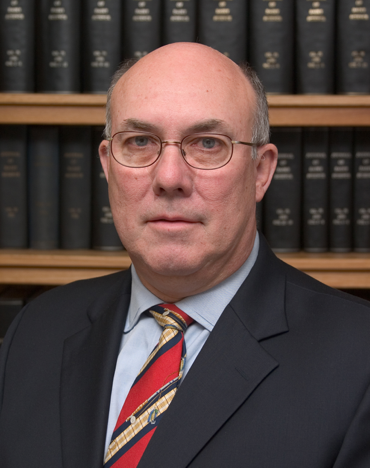
Bright creative scientists can be found in the high schools across this nation. The evidence is impressive and the American Junior Academy of Science helps to keep the students engaged in science programs as a career choice. The mentoring, nurturing and guiding of these students through the programs of the AJAS pays huge benefits. I am truly impressed with the maturity and quality of the research these students present at the AAAS annual conference and in their home communities.
It has been my pleasure to visit with the students at the AJAS Breakfast with Scientists and also learn about their research at the poster session as a part of the AAAS annual meeting. I promote AJAS to Sigma Xi Chapters and their officers. We also extend to the AJAS students an opportunity to receive subscriptions to the American Scientist magazine
While I believe it is never too late to learn I also believe it is never too early to nurture the next generation of scientists. I suggest that all scientists look at the accomplishments of the AJAS scientists and evaluate their contributions to the scientific literature.
Dr. Jerome F. Baker is the Former Executive Director of Sigma Xi, The Scientific Research Society. Founded in 1886, Sigma Xi is the international honor society of research scientists and engineers, with 500 chapters in North America and around the world. A recognized leader in animal genetics, he is the former chief executive officer of the Federation of Animal Science Societies and a former faculty member at the University of Georgia, Texas A&M University and the University of Nebraska.
Dr. Baker had a distinguished career in genetics research, graduate student training ,teaching, and research administration. He served on the editorial boards of the Journal of Animal Science and the Professional Animal Scientist. He has been active on four non-profit board of directors and has served on national and international program committees focused on animal genetics. His research has involved collaborative projects between various state and federal agencies as well as with colleagues around the world.
Return to TopLarry Bock, MBA, Entrepreneur
Lawrence A. "Larry" Bock (September 21, 1959 – July 6, 2016) will always be remembered as a true friend of AJAS.
Founder and Organizer of the USA Science & Engineering Festival

These are both exciting and challenging times in science -- a period when new technological advances, spawned by creative ideas and innovation, stand to impact our everyday world like no time before. This is why I, as an entrepreneur in biotechnology, am particularly pleased to be associated with the American Junior Academy of Science and similar organizations that encourage and motivate young students in STEM (science, technology, engineering and mathematics).
"I especially want students to know that in the emerging fields of life and physical science, biotech start-up research companies are making a significant contribution to scientific innovation – from drug discovery, genetics and neuroscience to evolution, renewable energy and materials science. In my continued involvement with AJAS, I look forward to communicating with young people about these and other exciting opportunities the start-up arena has to offer, including how students can combine their interest in science with entrepreneurial skills to make a real impact in biotechnology and nanotechnology.
Larry Bock was Founder and Organizer of the USA Science & Engineering Festival – the largest celebration of science and engineering of its kind in the country. He was also a successful serial entrepreneur who has founded, co-founded or financed the early stage growth of 50 companies in the life and physical sciences from inception to achieving an aggregate market capitalization in excess of $70 billion.
He was also the inspiration and executive director of the Inaugural San Diego Science Festival and USA Science & Engineering Festival which were the world‘s largest science festival of their kind in their first year. Bock is now organizing the 2nd USA Science Festival which will take place in the spring of 2012. The Festival culminates with a three-day Expo next year (April 27-29) at the Convention Center in Washington, DC, with more than 500 leading organizations participating. Larry earned his B.A. in Biochemistry from Bowdoin College and his MBA in Finance from UCLA.
For more information on the 2nd USA Science & Engineering Festival, visit: http://www.usasciencefestival.org/
Website:
http://www.cchem.berkeley.edu/pagrp/LarryBockinfo.html
Return to TopDr. Rita Colwell, Ph.D.
Distinguished University Professor
University of Maryland College Park
Johns Hopkins University Bloomberg School of Public Health
Senior Advisor and Chairman Emeritus, Canon U. S. Life Sciences
President and CEO, CosmosID, Inc.
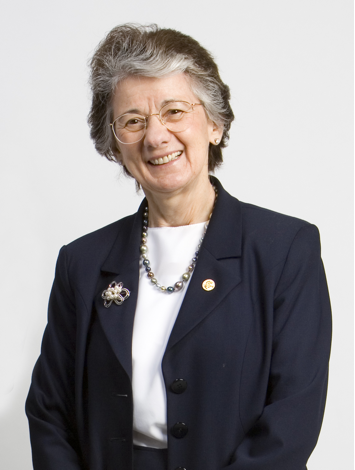
"The American Junior Academy of Science has contributed significantly to recruitment of bright young people to the STEM disciplines. It is an honor to be a part of AJAS."
"In today‘s world, science, engineering, mathematics, and technology plan an incredibly important role in sustaining the wellbeing of all countries of the world. For the United States, it is especially critical to maintain leadership in the STEM fields as those nurture innovation and serve as the engine of modern society."
Dr. Rita Colwell is Distinguished University Professor both at the University of Maryland at College Park and at Johns Hopkins University Bloomberg School of Public Health, Senior Advisor and Chairman Emeritus, Canon US Life Sciences, Inc., and President and CEO of CosmosID, Inc. Her interests are focused on global infectious diseases, water, and health, and she is currently developing an international network to address emerging infectious diseases and water issues, including safe drinking water for both the developed and developing world.
Dr. Colwell served as the 11th Director of the National Science Foundation, 1998-2004. In her capacity as NSF Director, she served as Co-chair of the Committee on Science of the National Science and Technology Council. One of her major interests include K-12 science and mathematics education, graduate science and engineering education and the increased participation of women and minorities in science and engineering.
Dr. Colwell has held many advisory positions in the U.S. Government, nonprofit science policy organizations, and private foundations, as well as in the international scientific research community. She is a nationally-respected scientist and educator, and has authored or co-authored 17 books and more than 750 scientific publications. She produced the award-winning film, Invisible Seas, and has served on editorial boards of numerous scientific journals.
Before going to NSF, Dr. Colwell was President of the University of Maryland Biotechnology Institute and Professor of Microbiology and Biotechnology at the University Maryland. She was also a member of the National Science Board from 1984 to 1990.
Dr. Colwell has previously served as Chairman of the Board of Governors of the American Academy of Microbiology and also as President of the American Association for the Advancement of Science, the Washington Academy of Sciences, the American Society for Microbiology, the Sigma Xi National Science Honorary Society, and the International Union of Microbiological Societies. Dr. Colwell is a member of the National Academy of Sciences, the Royal Swedish Academy of Sciences, Stockholm, the Royal Society of Canada, and the American Academy of Arts and Sciences, and the American Philosophical Society. She is Immediate Past-President of the American Institute of Biological Sciences (AIBS).
Dr. Colwell has also been awarded 55 honorary degrees from institutions of higher education, including her Alma Mater, Purdue University and is the recipient of the Order of the Rising Sun, Gold and Silver Star, bestowed by the Emperor of Japan, the 2006 National Medal of Science awarded by the President of the United States, and the 2010 Stockholm Water Prize awarded by the King of Sweden. Dr. Colwell is an honorary member of the microbiological societies of the UK, Australia, France, Israel, Bangladesh, Czechoslovakia, Royal Irish Academy, and the U.S. and has held several honorary professorships, including the University of Queensland, Australia. A geological site in Antarctica, Colwell Massif, has been named in recognition of her work in the polar regions.
Born in Beverly, Massachusetts, Dr. Colwell holds a B.S. in Bacteriology and an M.S. in Genetics, from Purdue University, and a Ph.D. in Oceanography from the University of Washington.
Websites:
http://www.cbcb.umd.edu/~rcolwell/
http://www.cbmg.umd.edu/faculty/ritacolwell
Return to TopDr. Tee L. Guidotti, MD, MPH
Past-President of Sigma Xi, the Scientific Research Honor Society
AAAS Fellow
AJAS Fellow

The American Junior Academy of Science was a key experience in launching my career in science. While I was a high school student in Burbank, California, I did research in the summer of 1965 in the biophysics laboratory of Dr. Myles Maxfield at the University of Southern California, under a program of the Committee for Advancement in Science and Technology, managed by Dr. Harry Sobel. People noticed and I was invited to present the work at the AJAS session at the AAAS Meeting in Berkeley, California, in 1965.
That experience introduced me into the real and adult world of how scientists communicate and exchange information rigorously and dispassionately. Successfully navigating that experience encouraged me in my interest in science and led me to take part in enrichment programs at the Los Angeles County Museum of Natural History, which was a long drive on a Saturday morning – I got a ride every week with the Lehman family. Under the mentorship of Dr. Gretchen Sibley I became President of the Museum Student Association and edited the science journal before graduating high school in 1967."
"Fifty years later, I have mentored my own students and served as leadership (as President of Sigma Xi, the Scientific Research Honor Society), and as editor of an important journal in my field. I learned to do these things well by doing them early. I give back through participation in the AJAS Breakfast with Scientists and the Sigma Xi Student Research Forum.
Looking back on those early years, I would not have had the confidence to be a leader in science and to do these things without the encouragement that AJAS gave me. A child‘s interest in science needs to be sustained as they become teenagers. I know that having such an intense, deep interest in science sets young people apart from their peers during adolescence and young adulthood. Being with others who share their enthusiasm and focus gives validation and encouragement when young people need it most. Today, I get a thrill from interacting with these keen young minds and watching them achieve and grow confident, as I did from rich experiences.
Dr. Guidotti was raised in Burbank, California, a city with a strong science and engineering foundation due to the Lockheed Corporation‘s headquarters and legendary Skunk Works and the technical side of the entertainment industry (especially animation, due to Disney Studios and Warner Brothers) due to its concentration of television, movie, and studios. He haunted the local branch of the Burbank Public Library, was a member of its science club in elementary school, and became a Smokey the Bear Junior Forest Ranger by reading and discussing books on conservation and the environment. He attended John Burroughs High School and participated in several enrichment programs that proved critical to his understanding and appreciation of science. He attended the University of Southern California in Biological Sciences, becoming President of the Biology Students Association and in 1969 he founded a campus organization devoted to the environment that sponsored Earth Day (1970) and helped build both a coalition of ecology groups in Southern California and a federation of student ecology groups in California. However, he went to medical school at the University of California at San Diego to become a physician and public health practitioner with a career interest in the environment. He then completed medical training in internal medicine, pulmonary medicine, and occupational medicine and obtained his MPH at Johns Hopkins. He has devoted his career to occupational and environmental health, at the University of Alberta and the George Washington University, from which he retired in 2009 to launch a second career as an international consultant. In 2015 he was a Fulbright Visiting Research Professor at the University of Ottawa in the Institute for Science, Society, and Policy. He has received numerous awards (including the Knudsen Award, in occupational medicine) and fellowships (including AAAS) in occupational medicine, environmental health, and science. In addition to specific technical contributions in occupational health and air quality research, he has played a major role in shaping modern occupational and environmental medicine as a visible, evidence-based medical specialization. His work has focused recently on health and problems of environmental sustainability. He has served as President of Sigma Xi, the Scientific Research Honor Society, and is active with the Council of Scientific Society Presidents.
Webpage: www.teeguidotti.com
Return to TopDr. H. Robert Horvitz, Ph.D., Biologist
2002 Nobel Laureate in Physiology or Medicine
HHMI Investigator
Professor of Biology, Massachusetts Institute of Technology
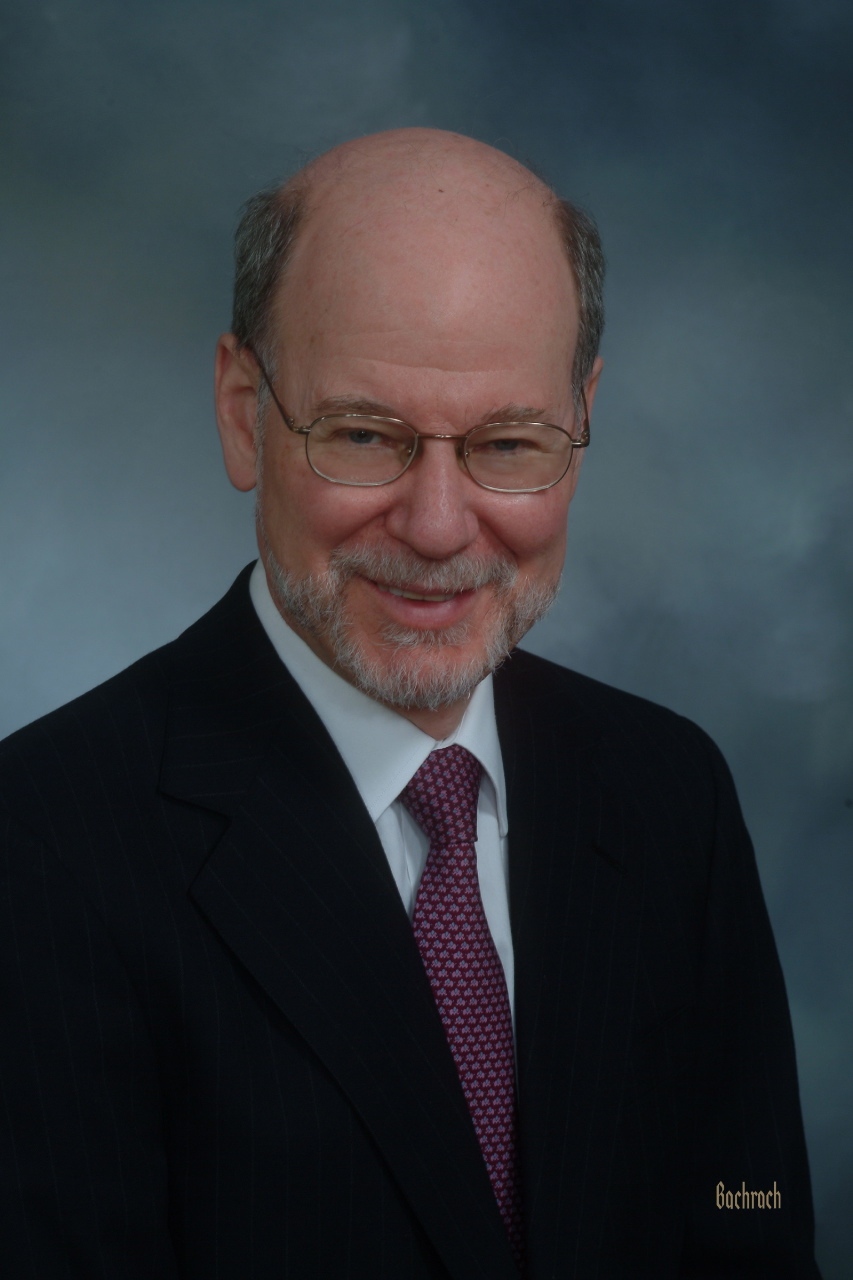
Dr. H. Robert Horvitz was born in Chicago, IL in 1947. He attended DeWitt Clinton Elementary School and East Prairie Grammar School. After graduating from Niles Township Community High School (East Division) in Skokie, IL, he enrolled at MIT where he received two degrees, in mathematics and economics. He then enrolled in the PhD program in biology at Harvard University where he worked in the laboratories of James Watson and Walter Gilbert studying the bacterial virus T4 and mechanisms of controlling gene expression. He did his postdoctoral work in Cambridge, England in the laboratory of Sydney Brenner. There he began his studies of the nematode Caenorhabditis elegans. In 1978 he became a faculty member in the Department of Biology at MIT. He shared the 2002 Nobel Prize in Physiology or Medicine with Sydney Brenner and John Sulston for discovering and characterizing genes controlling programmed cell death (apoptosis) in and organ development of C. elegans.
In his Nobel autobiography, Dr. Horvitz wrote, "It was my mother, with her interest and knowledge as a science teacher, who encouraged my first experiences with experimental science. My sixth grade science project, which I think was her idea, was entitled 'Electricity Produces Light through Heat' and won a third prize. My ninth grade project, in which I used the fruit fly Drosophila melanogaster to replicate Gregor Mendel's famed 3:1 and 9:3:3:1 inheritance ratios, required my mother to relinquish her bathroom for my breeding experiments. She helped me prepare the fly food, which smelled awful, and tolerated the fact that to anesthetize the flies I used ether, which smelled worse. This project also won a prize, and earned me a trip to the Illinois State Science Fair, in Champaign-Urbana."
Dr. Horvitz is a member of the U.S. National Academy of Sciences and the U.S. Institute of Medicine and is a recipient of numerous awards in addition to the Nobel Prize.
Website:
http://www.nobelprize.org/nobel_prizes/medicine/laureates/2002/horvitz-autobio.html
Return to TopDr. Eric Lander, Ph.D.
President and Founding Director of the Broad Institute
President‘s Council of Advisors on Science and Technology Co-Chair
Professor of Biology at MIT
Professor of Systems Biology at Harvard Medical School
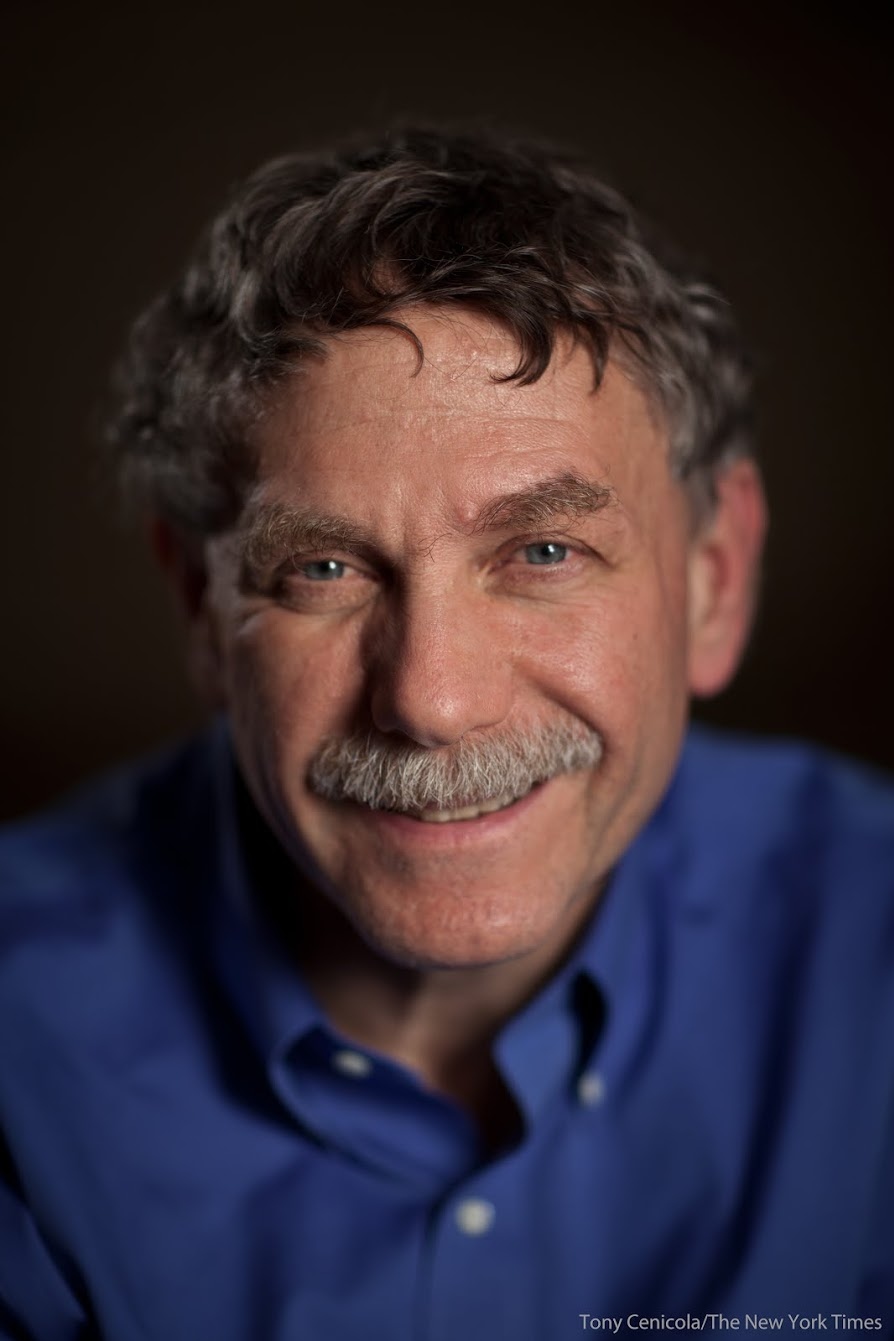
"AJAS supplies the extraordinary opportunity for high school kids to come together and be recognized for their scientific research. When kids learn the excitement of scientific discovery, it can be a transformative -- even addictive -- experience. It can change lives."
Eric Lander is President and Founding Director of the Broad Institute. Over the past 15 years, Eric and colleagues have developed many of the key tools and informational resources of modern mammalian genomics. They have developed new analytical and laboratory techniques that have been applied to a wide range of common diseases.
A recipient of numerous honors and awards, Eric has been appointed by President Obama to co-chair the President‘s Council of Advisors on Science and Technology. He is professor of biology at MIT and professor of systems biology at Harvard Medical School.
Eric earned his B.A. in mathematics from Princeton University (1978) and his Ph.D. in mathematics from Oxford University (1981) as a Rhodes Scholar.
Return to TopDr. Leon Max Lederman, Ph.D.
Director Emeritus of Fermi National Accelerator Laboratory (Fermilab)
Founder of the Illinois Mathematics and Science Academy
National Medal of Science in 1965
Wolf Prize for Physics in 1982
Nobel Prize in Physics in 1988
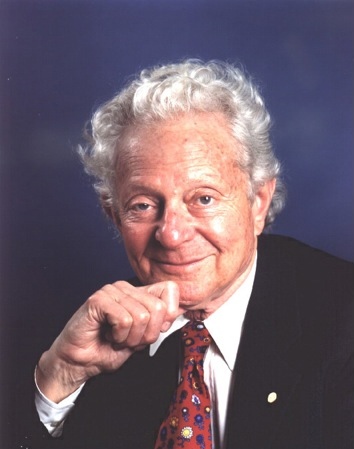
Leon Max Lederman, the internationally renowned high-energy physicist, is one of the founding fathers of the Illinois Mathematics andScience Academy (IMSA) for high school students. He joined the IMSA's staff as the Resident Scholar in September 1998 to direct the newly-established IMSA Great Minds Program. Dr. Lederman's involvement in the worldwide scientific community, as well as his reputation in others areas of society, including educational reform, enabled him to bring some of the most stimulating and best minds to IMSA. Students from IMSA present their scientific research as Delegates to the American Junior Academy of Science (AJAS) each year at the AAAS meetings.
Leon Max Lederman (born July 15, 1922) is an American Nobel Prize Winner physicist. The son of Russian immigrants, Leon Max Lederman was born in New York and educated at City College. After three years with the US Signal Corps during the war, he went to Columbia where he earned his PhD in 1951. He was appointed professor of physics in 1958 and remained at Columbia until 1979.
In 1958, he was promoted to Professor. He was the Director of the Nevis Labs from 1961 to 1978. In 1979, he became Director of the Fermi National Accelerator Laboratory, Batavia, Illinois, a post he held until his retirement in 1989. He was awarded the Nobel Prize in Physics in 1988, along with Melvin Schwartz and Jack Steinberger, for their work on neutrinos. In addition to receiving the Nobel Prize, Lederman was awarded the National Medal of Science (1965) and along with Martin Lewis Perl, the Wolf Prize for Physics (1982), for their research on quarks and leptons. In 2012 he was awarded the Vannevar Bush Award for his extraordinary contributions to the understanding of basic forces and particles of nature.
Leon Lederman's publication list runs up to 200 papers. He is the co-author of the books, The God Particle: If the Universe Is the Answer, What Is the Question? (1989, written with Dick Teresi) and From Quarks to the Cosmos: Tools of Discovery (1995, co-authored with David N. Schramm). In these publications, Lederman relates humor, metaphors, and storytelling to dive into the mysteries of matter, discussing particle accelerators and the recently discovered (2012) "God particle the Higgs boson.
Dr. Lederman, has attended the American Junior Academy of Science‘s Breakfast with Scientists for many years and has a passion for inspiring young scientists.
Websites:
http://www.achievement.org/autodoc/page/led0bio-1
Return to TopDr. Marcia McNutt, Ph.D.
Editor-in-Chief
Science family of Journals
American Association for the Advancement of Science
Council Nominee for President, National Academy of Sciences
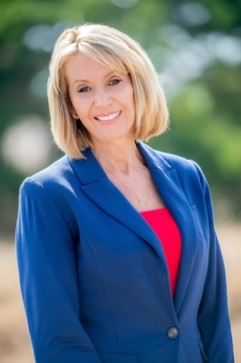
"I have been privileged to participate in American Junior Academy events for several years at the annual meetings of the American Association for the Advancement of Science. Each time I have been impressed by the enthusiasm of the students, their passion for science, their boundless dreams for the future, and the dedication of their mentors. Participation in the Academy is a great way for students to gain confidence, network with other students, and expand their scientific horizons."
Marcia McNutt is a geophysicist who became the nineteenth editor-in-chief of Science on June 1, 2013. Prior to joining Science, she served as the director of the US Geological Survey from 2009 to 2013 as one of a group of accomplished scientists who populated top government posts as part of President Obama‘s dream team. During her tenure, the USGS responded to a number of major disasters, including earthquakes in Haiti, Chile, and Japan, and the Deepwater Horizon oil spill. McNutt personally served on a team of government scientists and engineers at BP headquarters in Houston helping to contain the oil and cap the well. She led the Flow Rate Technical Group that provided estimates of the rate of oil discharge during the active phase of the oil spill. For her contributions, she was awarded the US Coast Guard‘s Meritorious Service Medal.
Prior to joining the USGS, McNutt served as president and chief executive officer of the Monterey Bay Aquarium Research Institute (MBARI), in Moss Landing, CA. During her time at MBARI, the institution became a leader in developing biological and chemical sensors for remote ocean deployment, installed the first deep-sea cabled observatory in US waters, and advanced the integration of artificial intelligence into autonomous underwater vehicles for complex undersea missions.
Before MBARI, McNutt began her faculty career at MIT where she became the Griswold Professor of Geophysics and served as Director of the Joint Program in Oceanography & Applied Ocean Science & Engineering, offered by MIT and the Woods Hole Oceanographic Institution. Her own research area is the dynamics of the upper mantle and lithosphere on geologic time scales, work that has taken her to distant continents and oceans for field observations. She is a veteran of more than a dozen deep-sea expeditions, more than half of which she has served as chief scientist or co-chief scientist.
McNutt served as President of the American Geophysical Union from 2000-2002. She was Chair of the Board of Governors for Joint Oceanographic Institutions, helping to bring about its merger with the Consortium for Ocean Research and Education to become the Consortium for Ocean Leadership, for which she served as Trustee. She is a fellow of the American Geophysical Union, the Geological Society of America, the American Association for the Advancement of Science (AAAS), and the International Association of Geodesy.
McNutt‘s honors and awards include membership in the National Academy of Sciences, the American Philosophical Society, and the American Academy of Arts and Sciences. She also holds honorary doctoral degrees from Colorado College, University of Minnesota, Monmouth University, and Colorado School of Mines. She was awarded the Macelwane Medal by the American Geophysical Union in 1988 for research accomplishments by a young scientist and the Maurice Ewing Medal in 2007 for her significant contributions to deep-sea exploration.
She has served on numerous evaluation and advisory boards for institutions such as the Monterey Bay Aquarium, Stanford University, Harvard University, Science Magazine and Schlumberger.
Return to TopDr. George "Pinky" Nelson, Ph.D. Astronomy
NASA Astronaut 1978-1989
Western Washington University
Emeritus Professor, Physics and Astronomy
Director, Science Mathematics and Technology Education
Former Director, AAAS Project 2061
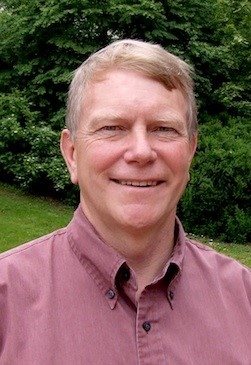
Supporting and recruiting the next generation of America‘s brightest students to pursue careers in science, engineering, and mathematics is critical to maintaining our leadership in the world. The American Junior Academy of Science is dedicated to encouraging high school students with a passion for science to reach for the stars. I am proud to be a part of recognizing some of these students through the Washington State Academy of Sciences and accompanying them to the AJAS meetings where they begin their initiation into the community. Meeting and getting to know these remarkable young students restores my optimism for the future.
Dr. Nelson was born in Charles City, Iowa. He graduated from Willmar Senior High School, Willmar, Minnesota, in 1968. He received a Bachelor of Science degree in Physics from Harvey Mudd College in 1972. Graduate studies at the University of Washington led to a PhD in Astronomy in 1978.
Dr. Nelson performed astronomical research at the Sacramento Peak Solar Observatory, Sunspot, New Mexico; the Astronomical Institute at Utrecht (Utrecht, Netherlands) and the University of Göttingen Observatory, (Göttingen, West Germany), and at the Joint Institute for Laboratory Astrophysics (Boulder, Colorado).
He was selected as an astronaut candidate by NASA in January 1978. A veteran of three space flights, Dr. Nelson served aboard STS-41-C in 1984, STS-61C in 1986 and STS-26 in 1988. He has logged a total of 411 hours in space, including 10 hours of EVA (spacewalk) flight time.
He left NASA in June 1989, became an assistant provost at the University of Washington. Nelson served as director of the American Association for the Advancement of Science (AAAS) Project 2061, a long-term program to reform K-12 science education in the United States. He is also the emeritus director of the Science, Mathematics and Technology Education program at Western Washington University in Bellingham, Washington.
Dr. Nelson has received the NASA Exceptional Engineering Achievement Medal, the NASA Exceptional Service Medal, 3 NASA Space Flight Medals, the AIAA Haley Space Flight Award, Fédération Aéronautique Internationale V. M. Komarov Diploma, and a Western Washington University Faculty Outstanding Service Award. In 2009, Nelson was inducted into the U.S. Astronaut Hall of Fame. He is an elected member of Washington State Academy of Science and an Elected Fellow of the American Association for the Advancement of Science.
Webpage: https://en.wikipedia.org/wiki/George_Nelson_(astronaut)
Return to TopDr. John Charles Nemeth
President. Education and Research Consulting
Former CEO and Executive Director of Sigma Xi, The Scientific Research Honor Society
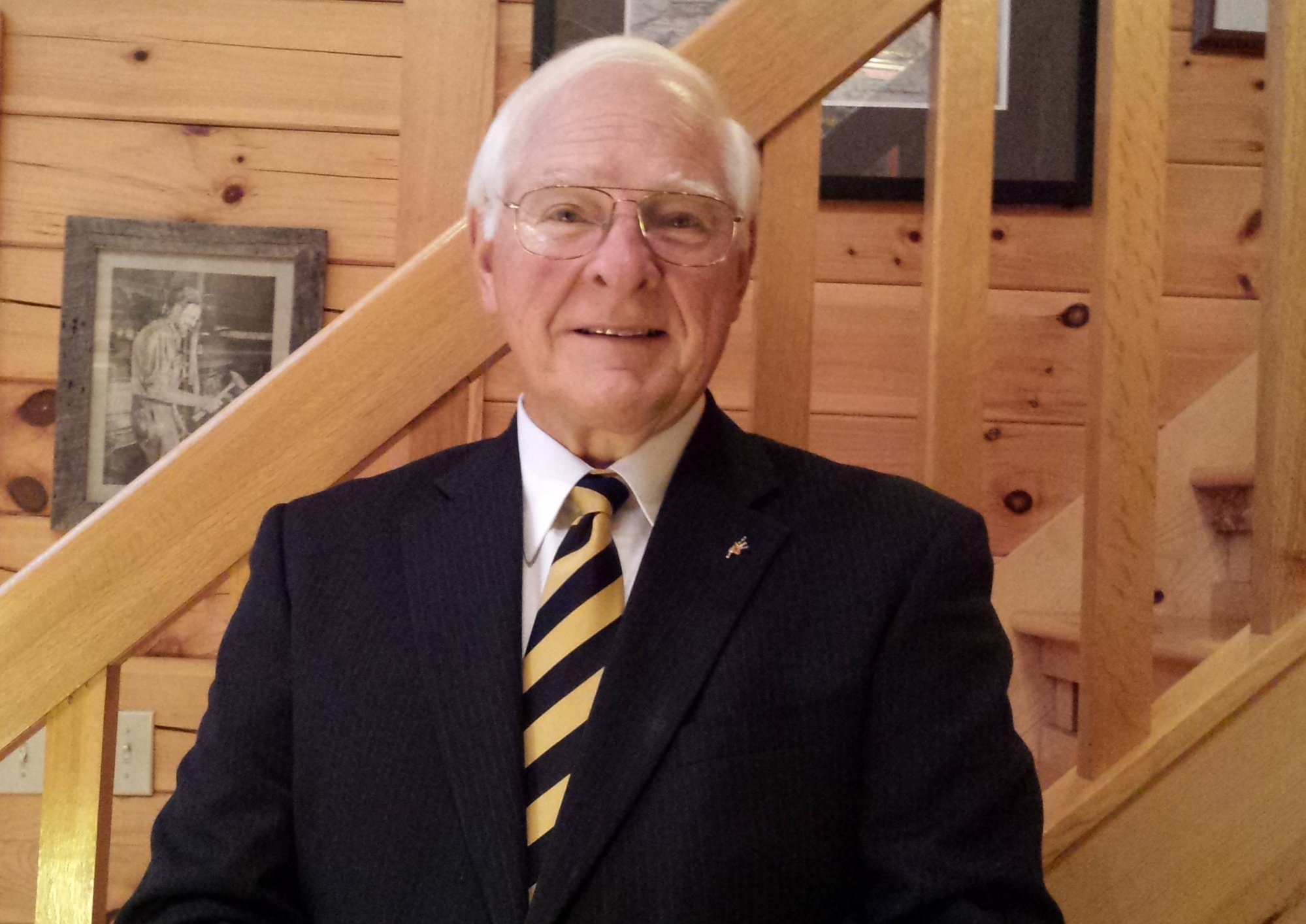
Starting as a high school teacher and coach, then through my further fifty-year plus career in science and research, particularly with Sigma Xi and AAAS, I have become an ardent advocate for young researchers. Their enthusiasm for and love of research are characteristics to be nurtured and treasured. The AJAS breakfast at the annual AAAS conference and the several science fairs and poster sessions which I participate in have become the highlights of my year as a professional scientist. It is my opportunity to help lay a foundation of love for research and education that; incorporates my role, now, of paying back for the rewarding career I have had, engenders the feeling of worth and need throughout the most active years to pay now, and that finally outlines for the young how they can begin to pay forward for this wondrous journey, lined with rewards and assistance, that they embark upon.
Finally, my first honorific speaking invitation was to the North Carolina Academy of Science in Boone, NC in the mid-1970s at Appalachian State University.
Credentials:
Education and Research Consulting — Dr. John Nemeth established this research and education consulting firm in September 2009. Along with a cadre of over 200 Associates, he and his Principal Associate, Dr. Grace Toney Edwards, work with universities here and abroad, Federal and State agencies and departments, and firms in private industry. He is active in many organizations such as AAAS (member of three sections) and the National Association of Environmental Professionals. I also served on the National Academies‘ Committee on Under-represented Groups and the Expansion of the Science and Engineering Pipeline.
Sigma Xi—In the summer of 2015, the Executive Committee of Sigma Xi, asked Dr. John Nemeth to come out of retirement to lead the Society as CEO and Executive Director. The organization had been experiencing an ever lengthening period of decline and overall decision-making difficulties. He was charged to take stock and begin a turnaround of Sigma Xi‘s fortunes. The tenure of this temporary role was to be for six months and part time. The actuality became twenty-one months, and in effect full time. This period or effort was a labor of love and will always be a huge highlight in his career of teaching and research, environmental consulting, research and research administration, and not-for-profit management.
During this time, John implemented a series of administrative and human resources improvements at the HQ and several society-wide improvements in communication and interaction with the Board of Directors, the Delegates, and the approximately 500 chapters worldwide. A particular point of pride is his leadership in bringing Sigma Xi to become the first national science society to partner with March or Science, and to encourage sister societies to join the process. John persuaded the Board to have New York City, Chicago, San Francisco, San Diego, and Columbus to utilize our not-for-profit status for funding local marches.
Oak Ridge Associated Universities—John served as Vice President for University Partnerships at Oak Ridge Associated Universities (ORAU)—www.orau.org—for over eleven years. He established and developed ORAU‘s University Partnerships enterprise into the nation‘s largest science and technology university consortium consisting of 122 university and college campuses, including 99 major research institutions. He expanded research and education opportunities for ORAU‘s member institutions, thus strengthening universities‘ global leadership in science, technology, engineering, and math disciplines, and he pioneered the ORNL-Core University partnership initiative.
Georgia Institute of Technology—John was Director of the Environmental Science and Technology Laboratory of GTRI, both of which centered on applied environmental sciences and engineering projects and a staff of over 100. He was jointly appointed as Professor in of the Schools of Applied Biology, Civil & Environmental Engineering, and Earth & Atmospheric Sciences.
Environmental Consulting—John was Director of Environmental Sciences-Eastern District and Senior Waste Management Specialist for CH2MHILL. Earlier, as Chief Scientist and Corporate Environmental Sciences Consultant for Law Engineering Testing Company, and still earlier as Senior Ecologist for Coastal Zone Resources Corporation, He managed numerous environmental assessment projects across the country.
Other Accomplishments—Dr. John Nemeth taught ecology at NC State University and an array of biology courses at Erskine College in the early ’70s and is the senior author in the scientific literature and well over 300 technical reports prepared for industry and government. He also writes invited columns and is a frequent speaker at professional meetings and community functions and media appearances.
Webpage: www.educationandresearchconsulting.com
Return to TopDr. Gilbert S. Omenn, M.D., Ph.D., Geneticist
Professor of Internal Medicine, Human Genetics, Public Health,
and Computational Medicine & Bioinformatics
University of Michigan, Ann Arbor, MI

"The AJAS is a celebration of early successes and an entrance into the community of scientists and engineers. The AJAS helps young scientists build networks within their own states and across the nation. The AJAS activities have become an integral component of the big annual meeting of the American Association for the Advancement of Science (AAAS)."
"I have participated in the AJAS Breakfast with Scientists and met with students at their research poster sessions for many years, before and since my three years as president-elect, president, and board chair of the AAAS during 2004-2007."
"I have introduced the group at Plenary Lectures of the AAAS meetings, and encouraged others to do the same. And I greatly enjoy the chats with individual students."
"Our country needs a growing number of diverse and ambitious young scientists, engineers, and physician-scientists. We also need much greater science literacy among the rest of the population in all the roles in which people depend upon or utilize science and engineering. AAAS encourages members to get involved locally and statewide all across the country, which makes AJAS a key partner. Such activities are a great way to help our university students get involved with K-12 science."
Gil Omenn‘s research interests include cancer proteomics, chemoprevention of cancers, public health genetics, computational biology, science-based risk analysis, and health policy.
He was principal investigator of the beta-Carotene and Retinol Efficacy Trial (CARET) of preventive agents against lung cancer and heart disease; director of the Center for Health Promotion in Older Adults; creator of a university-wide initiative on Public Health Genetics in Ethical, Legal, and Policy Context; and a Howard Hughes Investigator while at the University of Washington and Fred Hutchinson Cancer Research Center in Seattle from 1969 to 1997.
He served as Executive Vice President for Medical Affairs at the University of Michigan and Chief Executive Officer of the UM Health System from 1997 to 2002. He now leads the Michigan Proteomics Alliance for Cancer Research, the international Human Plasma Proteome Project, and the UM Center for Computational Medicine and Bioinformatics.
He was a White House Fellow at the Atomic Energy Commission in 1973-1974. He served as Associate Director, Office of Science and Technology Policy, and Associate Director, Office of Management and Budget, in the Executive Office of the President in the Carter Administration during 1977-1981. He has served on the board of Amgen Inc. since 1987.
Omenn is the author of 487 research papers and scientific reviews and author/editor of 18 books. He is a member of the Institute of Medicine of the National Academy of Sciences, the American Academy of Arts and Sciences, the Association of American Physicians, and the American College of Physicians. He chaired the presidential/ congressional Commission on Risk Assessment and Risk Management (Omenn Commission) and the NAS/NAE/IOM Committee on Science, Engineering and Public Policy.
He received the John W. Gardner Legacy of Leadership Award from the White House Fellows Association in 2004 and the Walsh McDermott Medal from the Institute of Medicine in 2008. He received his BA from Princeton, MD from Harvard Medical School, and PhD in genetics from the University of Washington.
Website:
http://www.med.umich.edu/omenn.
Return to TopDr. Peter H. Raven, Ph.D., Botanist
President Emeritus, Missouri Botanical Garden
George Engelmann Professor of Botany Emeritus, Washington University in St. Louis
National Medal of Science, 2001

The encouragement of students to become scientists and engineers is one of the most important functions of our community. By given them the opportunity to attend AAAS meetings and mix with professionals, AJAS goes a long way toward encouraging them to take this direction in their lives. Also, the chance to mix with other students with common interests can be a powerful stimulus to taking up a meaningful scientific career. I have greatly enjoyed the AJAS breakfasts that I have been able to join at the meetings, and to have the chance to exchange views with the bright young students who attend.
I have served as an AJAS Board member in the past and will be pleased to continue helping to look for sponsors to enable students to travel to the annual meeting. I am extremely enthusiastic about the potential of the organization to inspire and assist in the development of young scientists. The association of students and their teachers in promoting, teaching, and implementing real research programs would certainly be encouraged by these activities, which definitely deserve the investment of time, resources, and money.
Peter Raven, a leading botanist and advocate of conservation and biodiversity with a notably international outlook, is president emeritus of the Missouri Botanical Garden and George Engelmann Professor of Botany Emeritus at Washington University in St. Louis. In addition, Dr. Raven is a Trustee of the National Geographic Society and Chairman of the Society's Committee for Research and Exploration. For more than 39 years, Dr. Raven headed the Missouri Botanical Garden, an institution he nurtured to become a world-class center for botanical research, education, and horticulture display. During this period, the Garden became a leader in botanical research and conservation in Latin America, Africa, Asia, and North America.
Dr. Raven first realized in the mid 1960s that the rapid growth of the human population, consumption, and the spread of polluting technologies were threatening biological diversity to a degree that had not been realized earlier. He soon became an outspoken advocate of the need for conservation throughout the world based on efforts to attain sustainability and social justice everywhere. He was described by TIME magazine as a "Hero for the Planet," and has received numerous prizes and awards, including the International Prize for Biology from the government of Japan; Volvo Environment Prize; the Tyler Prize for Environmental Achievement; the Sasakawa Environment Prize; and the BBVA Prize for Ecology and Conservation, Madrid. Earlier in his career, Dr. Raven held Guggenheim and John D. and Catherine T. MacArthur Foundation Fellowships.
In 2001, Dr. Raven received the National Medal of Science, the highest award for scientific accomplishment in the United States. He has been president of the American Association for the Advancement of Science, Sigma Xi, the American Institute of Biological Sciences, and a number of other organizations. He served for 12 years as Home Secretary of the National Academy of Sciences, to which he was elected in 1977. He is also a member of the American Academy of Arts and Sciences and of the American Philosophical Society, of the academies of science in Argentina, Australia, Austria, Brazil, Chile, China, Denmark, Georgia, Hungary, India, Italy, Mexico, New Zealand, Russia, Sweden, Ukraine, the U.K. (the Royal Society), and of the Pontifical Academy of Sciences and the Academy of Sciences for the Developing World (TWAS).
Dr. Raven is Co-editor of the Flora of China, a joint Chinese-American international project that is leading to a contemporary, 50-volume account on all the plants of China scheduled for completion in early 2013.
Dr. Raven has authored numerous books and publications, both popular and scientific, including Biology of Plants (co-authored with Ray Evert and Susan Eichhorn, W. H. Freeman and Company/Worth Publishers, New York), the internationally best-selling textbook in botany, of which the seventh edition appeared in 2007; and Environment (co authored with Linda Berg, Wiley & Sons, New York), a leading textbook on the environment, now in its seventh edition (2009).
Dr. Raven received his Ph.D. from the University of California, Los Angeles, in 1960 after completing his undergraduate studies at the University of California, Berkeley. He has been awarded a number of honorary degrees by universities in the United States and throughout the world. Married to Dr. Patricia Duncan Raven, he has four children.
Websites:
http://www.mobot.org/mobot/research/curators/raven.shtml
Return to TopDr. Phillip A. Sharp, Ph.D.
Institute Professor, Massachusetts Institute of Technology
Department of Biology, and Koch Institute for Integrative Cancer Research
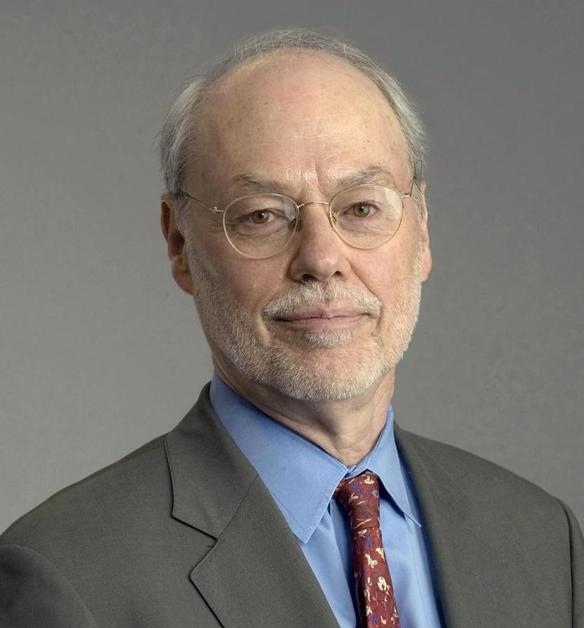
1993 Nobel Prize in Physiology or Medicine
2004 National Medal of Science
A native of Kentucky, Dr. Sharp earned a B.A. degree from Union College, KY and a PhD in chemistry from the University of Illinois, Champaign-Urbana. Prior to joining MIT, he was Senior Scientist at Cold Spring Harbor Laboratory. He is co-founder of Biogen Idec and Alnylam Pharmaceuticals.
In February 2013 at the AAAS/AJAS annual meeting in Boston, Dr. Sharp praised the AJAS delegates during their visit to MIT "The American Junior Academy of Science recognizes the remarkable achievements of young scientists in independent research," he said. Their projects have been selected from across the nation as the most outstanding and we congratulate them.
Phillip Sharp has made fundamental contributions to cancer biology and to understanding gene structure and regulation. Sharp‘s seminal discovery of ’split genes‘ in eukaryotic cells and the associated mechanism of pre-mRNA splicing resulted in numerous awards and honors, including the Nobel Prize in Physiology or Medicine (1993), the Lasker Prize (1988), the Gairdner Foundation International Award (1986) and the 2004 National Medal of Science. Over the years, his laboratory has developed technology for the biochemical characterization of protein complexes and interactions of factors with DNA and RNA. More recently, his laboratory contributed to the recognition of the fascinating roles of noncoding RNAs in processes related to RNAi and gene regulation. Dr. Sharp has authored over 400 papers. He serves on many advisory boards for the government, academic institutions, scientific societies, and companies.
His long list of service includes the presidency of the AAAS (2013) and Chair of the Scientific Advisory Committee, SU2C Project, AACR.
Dr. Phil Sharp is a member of the National Academy of Sciences, the Institute of Medicine, the American Academy of Arts and Sciences, the American Philosophical Society, and the Royal Society of the UK.
Websites:
http://web.mit.edu/sharplab/cv.html
Media:
A link to a videotaped conversation https://biology.mit.edu/about/conversation_scientists_phillip_sharp
Return to TopDr. JoAnne Stubbe, Ph.D., Chemist
2009 recipient of the National Medal of Science
Novartis professor of Chemistry, and Professor of Biology, Massachusetts Institute of Technology

Dr. Stubbe was born in Urbana Illinois and shortly thereafter moved to Massachusetts where she attended Classical High school and became excited by a Chemistry course by her high school teacher Mr. McQue. She was fortunate to carry out research at the Worcester Biological Foundation and Clark University while she was still in high school. She did her undergraduate studies in Chemistry at the University of Pennsylvania and graduated with honors in 1968. She did her graduate studies in Organic Chemistry at UC Berkeley where she received her Ph. D. in 1971, and was a Postdoctoral researcher at UCLA. Dr. Stubbe moved to Williams College in 1972 as an assistant professor in the Chemistry Department. After a leave of absence from Williams to conduct research at Brandeis University, she joined the faculty in the Pharmacology Department at Yale University. In 1980 she moved to the Biochemistry Department at the University of Wisconsin in Madison where she received tenure in 1985. In 1987 Dr. Stubbe became the first female tenure professor in the MIT Chemistry Department and is currently the Novartis Professor of Chemistry and Biology. She received the National Medal of Science in 2009 for her ground-breaking research in biochemistry and enzyme mechanism.
JoAnne Stubbe's research has helped scientists understand the ways in which enzymes catalyze chemical reactions with rate accelerations of 1017 (faster than a speeding bullet) over non-enzyme catalyzed reactions. Her major research efforts have focused on radical based reactions using the mechanism of nucleotide reductases, the enzymes involved in the biosynthesis of the building blocks required for deoxyribonucleic acid (DNA) biosynthesis, the molecule of heredity, as a paradigm. Her work has led to the design and synthesis of nucleotide analogs--structural derivatives of nucleotides--that are used clinically in the treatment of a number of cancers.
Websites:
Learn more about Dr. Stubbe‘s background and career path.
Learn more about Dr. Stubbe‘s research.
Return to TopDr. Jamie L. Vernon, Ph.D
Executive Director and CEO,
Sigma Xi, The Scientific Research Honor Society
Publisher, American Scientist

The American Junior Academy of Science Conference has proven year after year that science is much more than learning facts from a textbook. The students who participate in the AJAS Annual Conference are given the opportunity to showcase their research, to meet leading scientists from different fields, and to interact with students from around the country who share their enthusiasm for science. These experiences cultivate a deeper relationship with science and establish an indelible appreciation for the scientific process.
My involvement with AJAS extends across a broad range of interactions—from attending the AJAS Breakfast with Scientists to attending the poster presentations and moderating the oral presentations. I‘ve also had the pleasure of publishing research papers in Sigma Xi‘s pre-collegiate journal, Chronicle of The New Researcher, written by outstanding AJAS students. The leadership and volunteers who organize the AJAS events demonstrate an unparalleled commitment to these students and it shows in the breadth of opportunities that are created for them.
Science, technology, engineering and mathematics (STEM) are the driving forces behind the U.S. economy. The benefits of STEM are clearly reflected in our businesses, healthcare, and national security. In order for the U.S. to continue to lead on the global stage, we must invest time, resources, and money in teaching our students about the scientific process and how effective application of it can prepare them to realize their dreams. Once students truly grasp the potential of science, they are empowered to change their own lives and the world.
Jamie Vernon is a North Carolina native, who currently lives in the state capital city of Raleigh, North Carolina. Born in Concord, he has mostly resided in the rural eastern part of the state, including Rocky Mount and Wilmington, where he graduated from John T. Hoggard High School. He holds a B.S. in zoology from North Carolina State University, an M.S. in molecular biology and biotechnology from East Carolina University, and a Ph.D. in cell and molecular biology from The University of Texas at Austin.
Currently, he is the executive director and CEO at Sigma Xi, The Scientific Research Honor Society, based in Research Triangle Park, and publisher of the Society‘s award-winning magazine, American Scientist. Vernon was director of science communications and publications at Sigma Xi and editor-in-chief of American Scientist magazine from 2014 to 2017. He has also served as the Society‘s interim co-director of operations.
His scientific research career extended for more than a decade, during which he studied the expression of transcription factors involved in determining the animal body plan at East Carolina University with Dr. Jean-Luc Scemama, he endeavored to develop a gene therapy technology, similar to the CRISP-Cas9 system, at UT Austin with Dr. Alan Lambowitz, and he studied the immunological responses to HIV vaccines and the viral neutralizing capacity of engineered antibodies at the National Cancer Institute with Dr. Marjorie Robert-Guroff. More recently, he transitioned into science policy and communications by serving as an AAAS Science & Technology Policy Fellow and Oak Ridge Institute for Science and Education Fellow at the U.S. Department of Energy (DOE), where he worked in the Office of Energy Efficiency and Renewable Energy (EERE). His primary goal at DOE was to improve the measurement and communication of the economic impacts of the Department‘s $2.7 billion annual investment in clean and efficient energy technologies. To this end, he helped implement an EERE-wide evaluation system to measure and communicate evidence-based impact metrics. Also at DOE, he led an initiative to improve consumer energy data access services nationwide and helped launch the DOE National Clean Energy Business Plan Competition. In 2012, he worked with the U.S. Global Change Research Program in collaboration with the White House Office of Science & Technology Policy to improve the communication of federally-funded climate science to policymakers and the public.
He is a communicator, an organizational leader, and an entrepreneur. His first experience building a new organization occurred in the late 1990‘s when he helped establish the East Carolina Student Rural Health Coalition, an organization that delivered no-cost healthcare to North Carolina‘s rural population. He went on to launch student and professional organizations that address critical public needs at the University of Texas at Austin and in Washington, DC, including co-founding Potential Energy DC, an energy technology startup accelerator, in 2014. Along the way he has come to appreciate the important role that communication research and technology play in advancing organizational goals and he continues to integrate these lessons into his work.
He is currently focused on using digital technologies and programs to increase the reach and impact of American Scientist magazine and Sigma Xi‘s high school research journal, Chronicle of the New Researcher, and to enhance the member experience and the influence of Sigma Xi, The Scientific Research Honor Society worldwide.
Webpage: Jamie L. Vernon, Ph.D.
Return to TopStephen Wolfram, Ph.D.
Wolfram Research
Founder, CEO, and Chief Technologist
Stephen Wolfram works on building science, technology, and businesses based on computation. Born in England in 1959, Stephen started doing research in physics at an early age, publishing his first paper at 15 and receiving his PhD from Caltech at 20. He started using computers as a tool in 1973, and in 1979, built the first commercial system for symbolic mathematical computation.
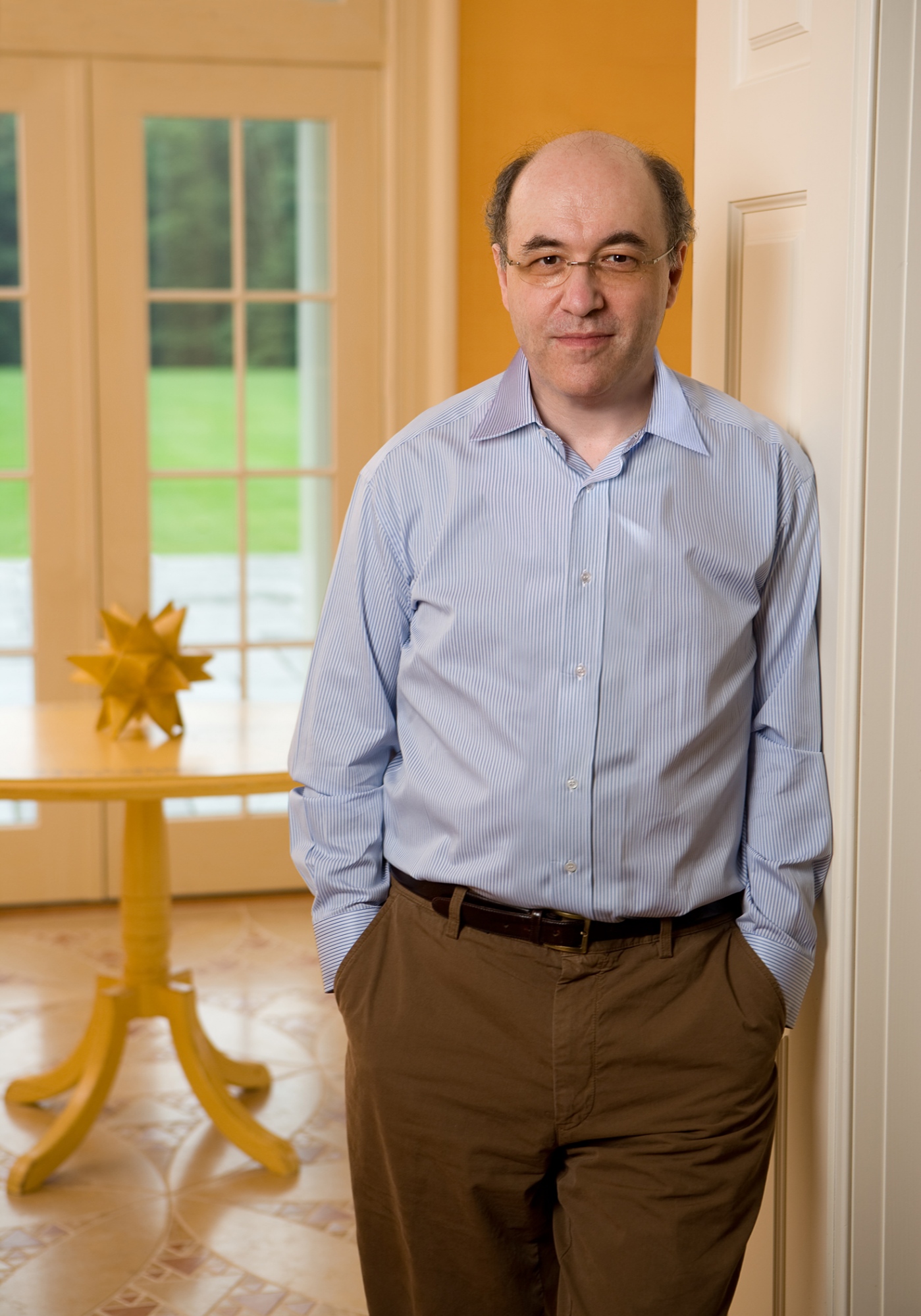
Wolfram received a MacArthur Fellowship in 1981, and soon thereafter began a large-scale basic science project to explore the computational universe of simple programs and their implications for understanding the complexity of nature. His early results on programs known as cellular automata have had wide applications across science, technology, and the arts. In 1986, seeking better tools for his own research, Wolfram began the construction of the Mathematica software system and formed his company, Wolfram Research. First released in 1988, Mathematica has been responsible for many inventions and discoveries over the past quarter century, and is used in essentially every university and major R&D organization around the world.
Wolfram founded Wolfram Research in 1987 and has been its CEO and chief technologist ever since. From 1991 to 2002, Wolfram returned to the study of the computational universe, and made a series of discoveries about the computational universe as well as physics, biology, and mathematics, which he summarized in his magnum opus A New Kind of Science, published in 2002. Building on ideas from A New Kind of Science, Wolfram then embarked on an ambitious project to make the world‘s systematic knowledge computable. The result, first launched in 2009, is the Wolfram|Alpha computational knowledge engine, which is used by millions of people every day and serves as the basis for intelligent assistants such as Siri.
Wolfram has been progressively building a stack of technology for nearly three decades, which in 2014 led to the launch of the Wolfram Language—a unique knowledge-based computer language in which as much knowledge as possible about computation and about the world is built in. The Wolfram Language has many implications for software and app development, as well as for data science and other applications of computation. It is also the basis for a major new educational initiative aimed at teaching computational thinking.
Wolfram‘s company Wolfram Research currently has a staff of about 700, mostly involved with research and development. Wolfram currently spends the majority of his time architecting technology and understanding its implications. He is interested in a wide range of areas where computational thinking is relevant. He lives in Concord, Massachusetts, and has four children.
Return to Top